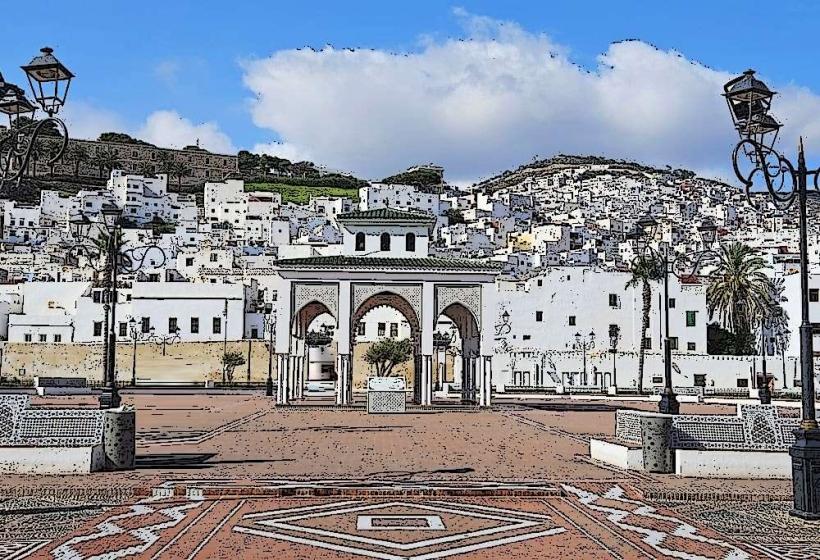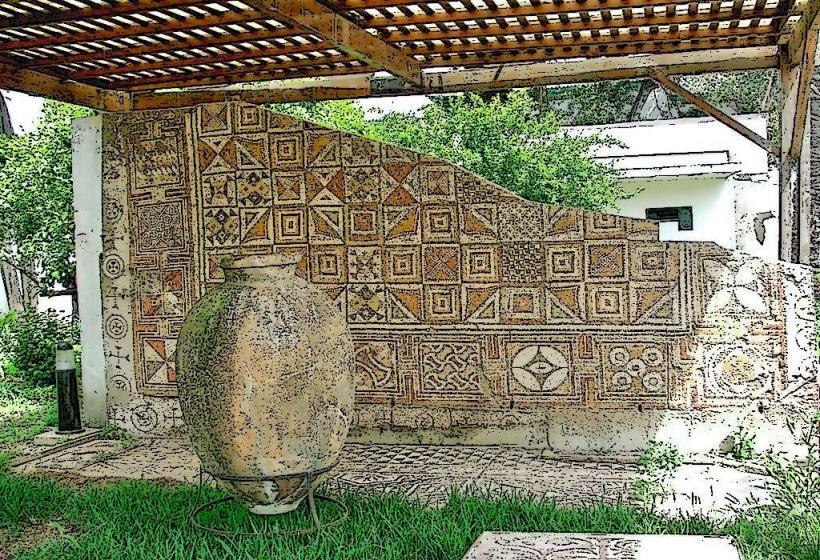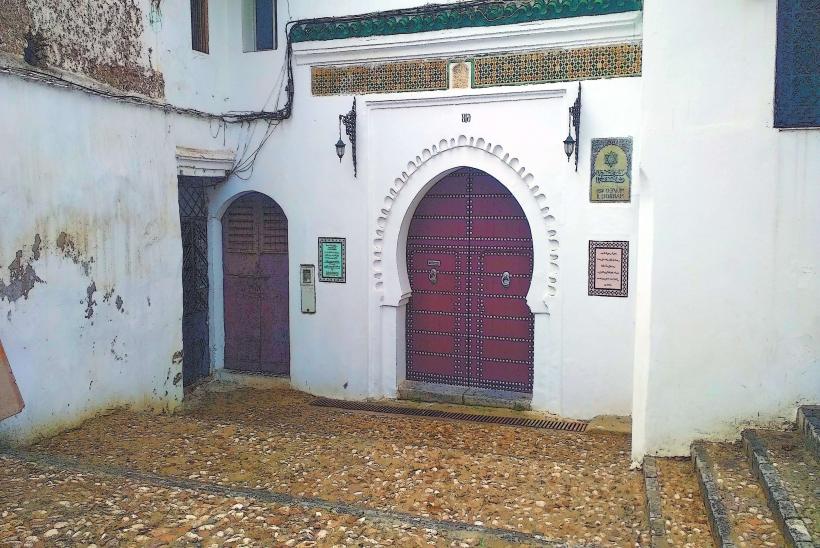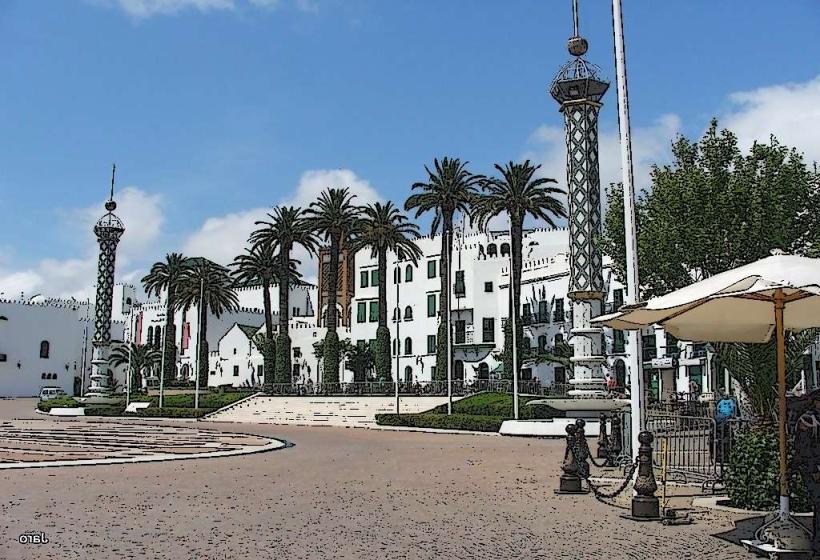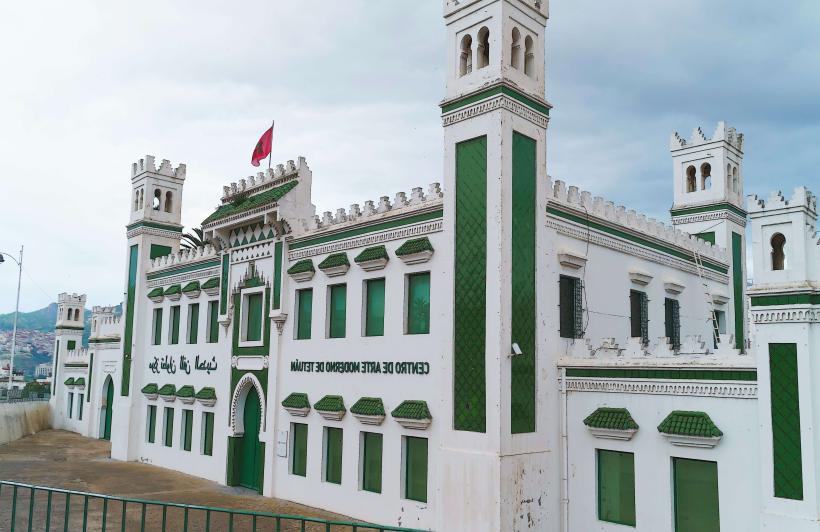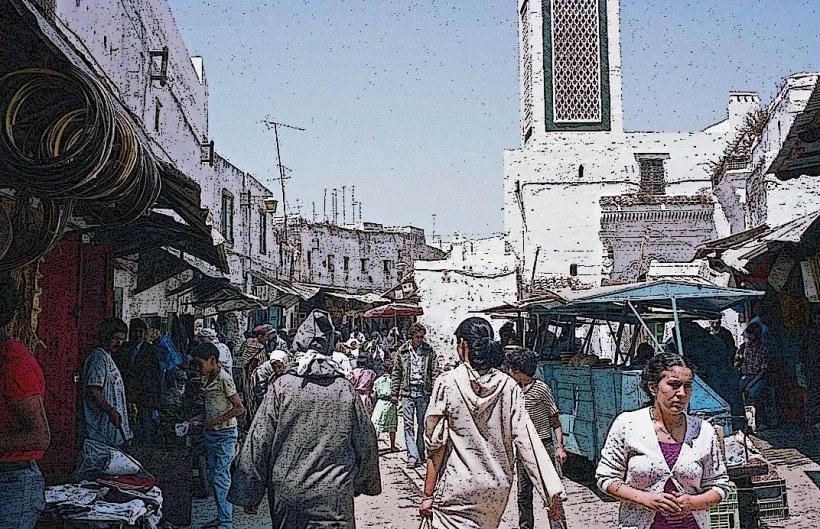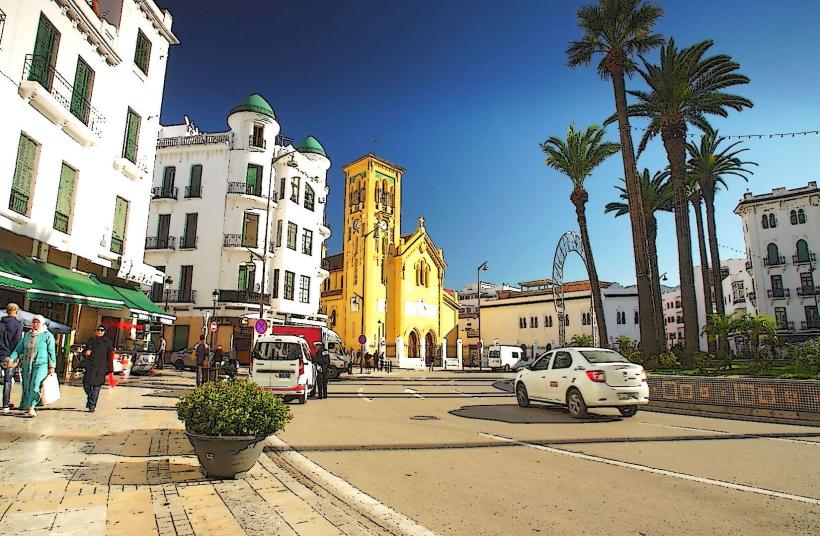Information
City: TetouanCountry: Morocco
Continent: Africa
Tetouan, Morocco, Africa
Overview
Here’s a closer examine at Tetouan, a northern Moroccan city nestled near the blue shimmer of the Mediterranean, in the Tanger-Tetouan-Al Hoceima region, besides just 60 kilometers, or roughly 37 miles, from Tangier, it stands as a major city along Morocco’s rugged northern coast.Tetouan, with its winding medina streets, deep cultural roots, and a touch of Spanish charm, has been a bustling hub of trade, art, and diplomacy for centuries, at the same time people sometimes call Tetouan the “white dove,” a nod to its gleaming whitewashed walls and the graceful curves of its Andalusian-style buildings.Tetouan sits in a valley at the foot of the Rif Mountains, where green hills roll out beneath craggy peaks that frame the city like a painted backdrop, in turn just a few miles from the Mediterranean coast, the area enjoys a mild climate, with warm breezes carrying the scent of salt and sun.The town sits snug in a valley carved by the Martil River, with fields of green stretching toward the Mediterranean and orchards heavy with fruit, furthermore tetouan began as a Phoenician outpost, yet its true rise came centuries later under the Moroccan Sultanate, when its markets filled with the scent of fresh mint and bustling trade.Bustling markets and lively streets made the city a key crossroads for trade and culture in the region, furthermore andalusian influence runs deep in the town, shaped by the arrival of Moors and Jews from Spain after Granada fell in the late 15th century, bringing with them the scent of orange blossoms and the rhythms of timeworn courtyard songs, maybe You can spot this influence in Tetouan’s whitewashed arches, the lilting rhythm of its language, and the intricate hand‑carved woodwork, while from 1912 to 1956, Tetouan sat under Spanish rule, and you can still behold the imprint in its cityscape - sunlit plazas, orderly streets, and the sound of Spanish mingling with Arabic in the markets.During the colonial era, the city served as a key administrative hub, and traces of that legacy still shape its streets and stone façades today, consequently tetouan is home to about 360,000 people, according to the latest estimates, making it one of Morocco’s bigger cities, with streets that buzz from morning till night.Most residents are Arab-Berber, yet you’ll still hear plenty of Spanish-an echo of the town’s colonial past lingering in its narrow streets, likewise in Tetouan, you’ll find Moroccan locals living alongside families with Spanish roots, especially in the older neighborhoods where sun-faded balconies lean over narrow streets, in a sense Tetouan’s economy thrives on trade, farming, and traditional handicrafts, with tourism playing a bigger role each year-its busy markets now draw visitors from far beyond the city, then the city’s economy thrives on its location, caught between Morocco’s bustling interior and the shores just across from Spain.Perched on the Mediterranean coast, Tetouan thrives as a busy trade hub where ships unload crates of fresh citrus and handmade goods, in turn the city runs a busy commercial port and ships out agricultural goods like fragrant olive oil, radiant citrus, and crisp vegetables.Somehow, Tetouan is famous for its handmade treasures, from the rich scent of freshly worked leather to colorful woven carpets and delicate ceramic pieces, in conjunction with the city’s famous for its traditional Moroccan jewelry, with silver gleaming in the markets, and richly woven textiles that draw travelers from far and wide, generally Tourism has grown into a key part of the economy in recent years, with bustling markets and crowded streets showing its rise, consequently with its ancient landmarks, winding alleys in the medina, and the salty breeze off the Mediterranean, the city draws visitors in.The area’s best known for its farming, with rows of olive trees, luminous citrus groves, and gardens full of fresh vegetables, along with tetouan’s roads and rail lines link it easily to cities across Morocco, with trains that hum through valleys and highways stretching toward the coast.It’s about an hour’s drive from Tangier, and you can catch a bus or hail a taxi straight to Rabat, Fez, or Marrakech, besides tetouan’s Sania Ramel Airport handles mainly domestic flights, but you’ll also find a few international routes-most often to Spain, just a short hop across the sea.Local amenities in Tetouan cater to both residents and visitors, with hotels, bustling restaurants, lively markets, and modern shopping centers all within easy reach, as well as the town’s equipped with modern essentials-healthcare centers, schools, even a shining little bank on the corner.Visitors can wander through bustling souks scented with spices, browse stalls packed with handwoven rugs, and step into sleek modern shops that cater to both locals and curious travelers, in addition in Tetouan, culture thrives in a lively mix of Moroccan tradition and Spanish flair, from ornate tilework to the scent of fresh bread drifting through its narrow streets.The city’s medina, a UNESCO World Heritage site, shows its Andalusian roots in every detail-from sunlit whitewashed walls to winding, shadowed lanes and ornate arches, after that in Tetouan, art thrives in sunlit galleries and bustling workshops, making the city famous for its vibrant fine arts scene.Skilled hands fill the spot, shaping leather, weaving radiant carpets, molding clay, and stitching fine embroidery, furthermore the city comes alive with cultural festivals, from the Tetouan International Festival of Andalusian Music to street events that echo the rhythms of both Moroccan and Andalusian traditions.In Tetouan, the cuisine mixes Moroccan warmth with Spanish flair, serving tagine, couscous, fresh seafood, and miniature tapas-style plates that arrive sizzling on the table, as a result the town’s cooking is famous for rich olive oil and fragrant spices, like the warm scent of cinnamon drifting from a bakery.Arabic is the official language, though most locals chat in Darija, the Moroccan dialect, simultaneously in Tetouan, you’ll also hear Spanish-echoes of the city’s long ties to Spain.French is spoken fluently in many places, and you’ll hear it often in boardrooms and government offices, likewise tetouan’s medina, its winding ancient town scented with fresh bread from tiny stalls, ranks among Morocco’s best-preserved treasures and proudly holds UNESCO World Heritage status.With its narrow streets, whitewashed walls, and graceful Andalusian arches, it’s a area you’ll want to wander for hours, equally important the Royal Palace of Tetouan stands as a proud emblem of Moroccan royalty, offering visitors a vivid glimpse of the royal family’s elegance-golden arches gleaming in the afternoon sun.Interestingly, At the Tetouan Archaeological Museum, you can wander past Roman coins, intricate Islamic tiles, and vibrant Berber textiles, each telling a piece of the region’s long story, subsequently the Ethnographic Museum opens a window into the daily rhythms, customs, and traditions of Tetouan and its neighboring villages, from woven carpets to the scent of fresh bread in a market stall.Locale Hassan II sits at the heart of Tetouan, where locals linger over coffee and tourists pause to take photos, as a result you’ll find cafés, restaurants, and sparkling fountains here, making it the perfect spot to soak up the city’s lively energy, more or less Saniat Ramel Beach sits just beyond Tetouan, drawing swimmers and sunseekers with its calm vibe and clear Mediterranean waters that glint under the afternoon sun, alternatively each year, the Tetouan International Festival fills the city with music and art, honoring its deep Andalusian roots and vibrant traditions, occasionally Jardin d’Infante is a peaceful spot where you can unwind, surrounded by deep green leaves and bursts of color from blooming flowers, perfect for a sluggish stroll beneath the shade, equally important the Alcazar of Tetouan is a historic fortress, its stone walls still carrying the echo of centuries past.
Author: Tourist Landmarks
Date: 2025-10-29
Landmarks in tetouan

